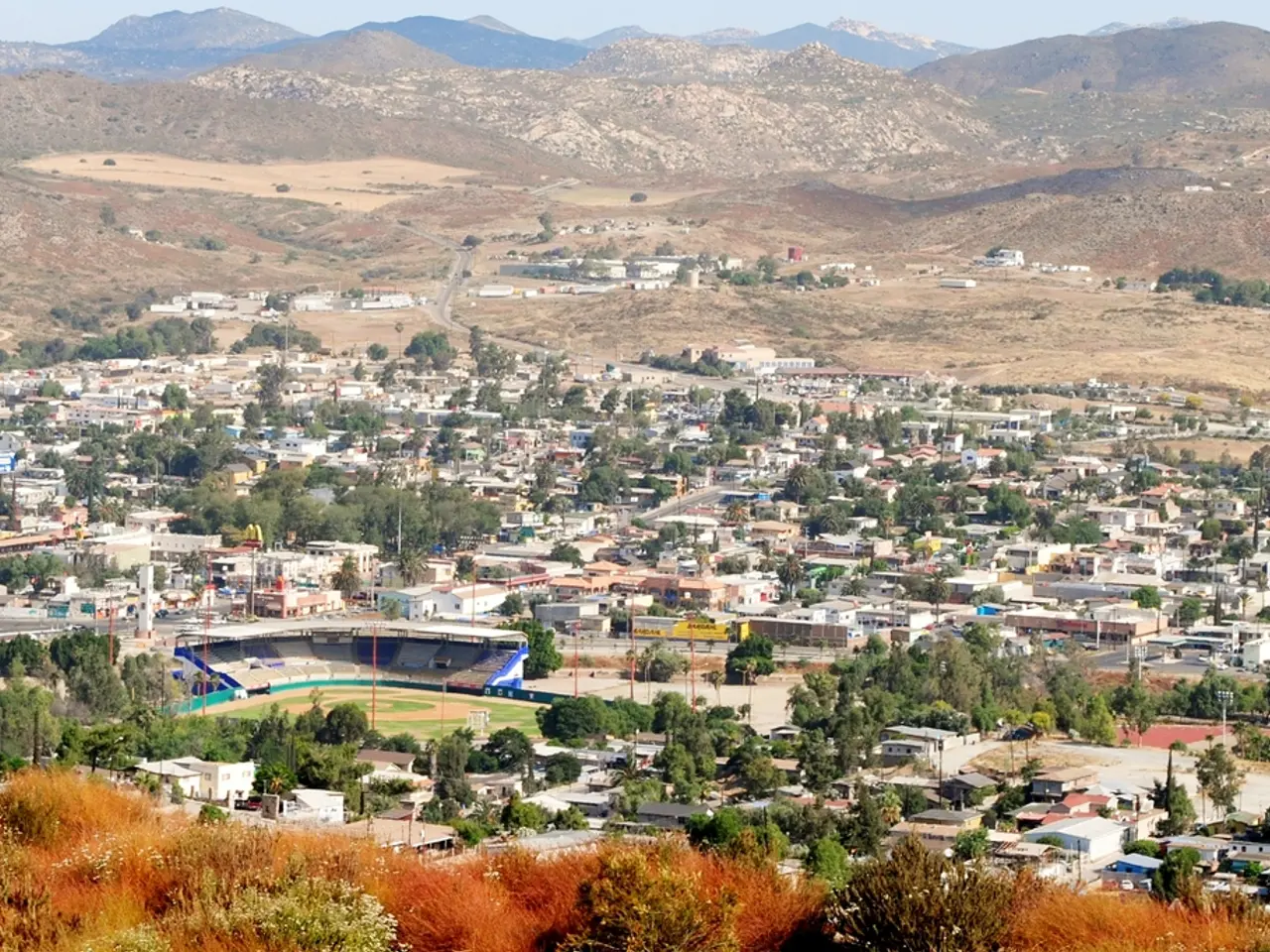Australian residents grapple with a hidden predicament in their home insurance sector
In a recent statement, James from the Sutherland Shire called the lack of insurance affordability a "silent crisis for ordinary Australians." His home, which is not at risk of flooding according to documents from the Sutherland Council, is facing unaffordable insurance premiums with quotes ranging from $7000 to over $12,000 for basic coverage.
This crisis is particularly prevalent in high-risk areas like North Queensland, where homeowners are paying twice as much as those in low-risk areas. Premiums have gone up across Australia, but especially in North Queensland cities such as Townsville, Mackay, and Cairns. In some cases, unit owners in Far North Queensland are facing premiums of $13,500 a year.
The surge in premiums is primarily due to the increased frequency and severity of catastrophic weather events such as cyclones, floods, and storms. Insurers factor in the elevated risk of claims from these natural disasters by charging significantly higher premiums to cover potential losses. Despite the Australian government’s cyclone reinsurance pool aiming to reduce costs, premiums in North Queensland remain more than double those in low-risk areas.
The reinsurance pool, established in 2022, requires participation from Australia’s biggest insurers by the end of 2023, and smaller insurers by the end of 2024. For households in medium-to-high-risk areas, premiums have decreased by about 11% since the introduction of the reinsurance pool. However, this reduction has not been enough to address the unaffordability crisis.
Consumer advocates argue that the current situation is unfair and unsustainable, with estimates suggesting up to 30% of North Queensland homes are uninsured due to unaffordable premiums. To address this issue, several measures are being considered, including broadening insurance market monitoring and transparency, enhancing and better funding government reinsurance schemes, encouraging risk mitigation and resilience measures, offering targeted subsidies or discounts, and improving consumer education and support.
The Australian Competition and Consumer Commission’s (ACCC) ongoing insurance monitoring is delivering crucial insight into premium trends. They are calling for the government to broaden the ACCC’s remit to ensure pricing is transparent and fair. The ACCC's intervention could help ensure that consumers get the answers they need without self-interest behind their advice.
In another case, Andrew from North Queensland took his case to the Australian Financial Complaints Authority (AFCA) as his Suncorp premiums had climbed 144% since 2019. However, AFCA only rules in a policyholder's favor if the insurer has made an error in calculating a premium increase. After initially rebuffing his claims, Suncorp ended up paying Andrew a settlement of $2500 to drop the AFCA case.
Organisations like CHOICE, which has been making a difference for Australian consumers for over 60 years, provide expert reviews and independent product testing. CHOICE is not funded by ads or sponsorship, and members value their unbiased advice.
The insurance unaffordability crisis in North Queensland intertwines economic, environmental, and social challenges in managing insurance affordability in disaster-prone regions of Australia. It is a crisis that affects ordinary Australians and requires urgent attention and action.
- In an effort to provide relief for homeowners in North Queensland, consumer advocates are proposing measures such as broadening insurance market monitoring, enhancing government reinsurance schemes, encouraging risk mitigation, offering subsidies or discounts, improving consumer education, and increasing transparency to ensure pricing is fair.
- With the ongoing crisis of unaffordable insurance premiums, particularly in North Queensland, organizations like CHOICE, which has been championing for Australian consumers for over six decades, offer expert reviews, independent product testing, and unbiased advice that consumers value and trust.




